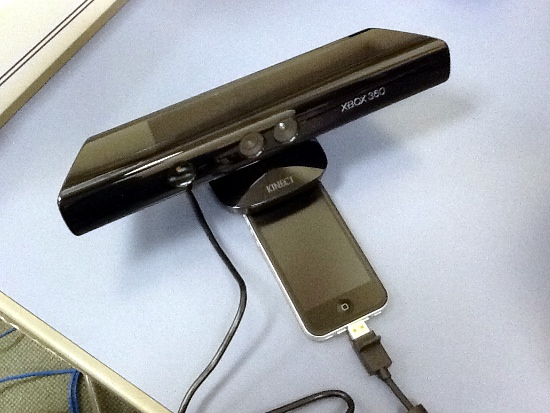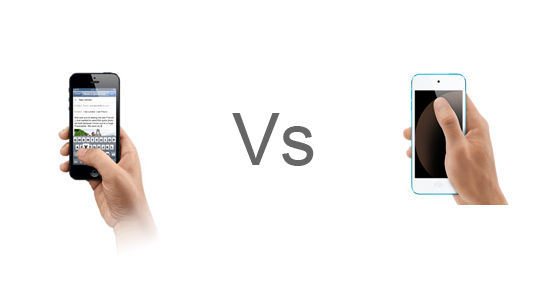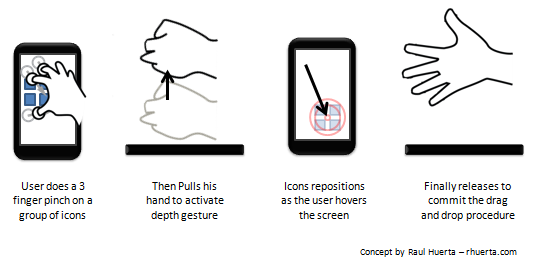Was the iPhone 5 event a let down?
Posted: September 13, 2012 Filed under: Random Talk, User Experience | Tags: Apple, iPhone, iTunes, Smartphone Leave a comment »As always, the world turned to California to check on what’s apple next offering on phones side, and also to check if there are any other upgrades to their current lineup of products and possibly the introductions of new ones.
The event in review: new iPhone, new iPods, no iPad Mini = few if any surprises. Did Apple disappoint? I don’t think so, but the iPhone 5 was heavily spoiled by the excessive leakage of the new phone parts, and that’s where most of the hype is focused on the Fall event, as always. Granted, much of the iPod news were cloudy, but except for the iPod Nano, which is the product that always changes the most, everything else was just predictable. The new iPod Touch is as expected, an iPhone 5 without the phone and few minor downgrades and featuring smaller and lighter design. Without a new product to show (bet the ones predicting the iPad Mini will move it to 2013), Apple’s event felt almost like if it wasn’t needed to begin with. Still most of them are great products, and that’s why is not a real let down, was just extremely predictable.
But let me make it clear, I don’t want to saturate the internet with even more repetition of the same information; you can check other sources for all the detailed information or even Apple’s site. What I want to do it’s a breakdown of the event and talk a bit about its products on the design and engineering perspective.
With that in mind, let’s begin!
iPhone 5
The new iPhone is bigger and small at the same time, a bit lighter and slimmer, but longer which accommodates to a new a bigger screen that is close to a standard widescreen ratio which must be amazing for consuming content. Some people criticized that Apple didn’t do a bigger screen all around and their answer had to do with ergonomics. Supposedly the width of the iPhone 5 is not bigger because it fits better in your hand, and I can surely bet that it has to do with the thumb, the finger that let us text messages and interact with different apps singlehandedly needs to reach to every part of the screen to support full interactivity with one hand. Assuming that Apple did their research they had the perfect size before, but why now add the extra height there? So the old screen had the wrong size all together or the new screen is wrong?
Here’s a video to illustrate my point:
If they designed the phone thinking about the standard human hand, I should be able to comfortably reach the top of my current iPhone screen, but if is higher I would rather slip my hand, and that’s what they do on the pics that shows how the thumb actually covers the whole screen, but again you will have to move your hand and that’s an extra step.
In the end I think is not that much about the thumb since software can be designed with that in mind, but about the hand, so in terms of making it bigger, longer was the way to go.
I actually like the new connector, the old one had almost a decade and was unnecessarily big, plus offering an adaptor at least brings an option to the consumer, but ads a lot of confusion to the product compatibility with accessories and other first and third party equipment. A new connector after a whole decade it’s ok, and I trust Apple will do the migration as painless as it can be without getting into the horrible port confusion that plagues some electronics, e.g. the display ports on the PC. In any case, by watching the advances in wireless technology we might not even need a connector in the future other than to charge it (until wireless electricity is viable).
There seem to be few changes in the back camera but a much needed upgrade on the front one, highly positive now that Facetime is going wild, and judging on how much people love to video blog or take portrait pictures, this will be just awesome.
iPods
First and foremost, what’s the deal with the strap on the new Touch? I don’t like the idea at all, iPods are products that you want to sit next to you on the bed or a sofa, sit in your pocket happily, is just changing of postions constantly and is not glued to your hand. Yes, the strap can make it more secure, but it severely limits the experience if your wear it all the time, plus, is going to tangle up with your earphones for sure. Weird idea that probably came from demographic research, but I’m not quite convinced. Other than that, the touch had is well needed refresh.
The Nano basically ignored pretty much that the 6th generation existed and went back to an evolution of the 5th, not a bad thing to do since the previous nano was more like a glorified shuffle. What I don’t quite get is why they made the design not consistent with iOS, the icons are now rounded and the home button too. Why they want to differentiate it? I assume they want to tell the user that, although this works in a similar way to iOS, is not a fully feature operative system, making it much like a focused toy, not a bad thing if the people that are being targeted wants something simple.
And the Shuffle? let’s not even start. No refresh at all, not even higher space or cheaper price, just new colors. Apple, you better had a new redesigned shuffle next year to make up for this. Definitely the biggest disappointment of the event. The reason for that is that I consider the shuffle the epitome of the simplicity and that is just about music, I love it! To think it doesn’t deserve a redesign is like saying they have a perfect product, which is never true. It can also be that they will slowly move it from the spotlight, like they did with the iPod Classic which also deserves a refresh. The iPod Classic is the only portable player with a humongous size for the person that wants to take everything with them, Apple can even evolve it to be a hub for your other iDevices so they can stream data from it.
iTunes
Finally, the refresh of the new iTunes is more than welcome. While there’s cero progress on the individual songs view, pretty much everything else is now better, and I personally love the “up next” feature, something that I was wishing for a very long time. Hopefully they translate that too to the Music Player on iOS.
Conclusion
Of course, until I haven’t tried these products I can confirm some of what I have written here. Still I wanted to state some of my hypothesis. Eventually I’ll have in my hand some of these devices and I’ll be able to tell if my early judging was correct. Is very exciting to think how some of the thinking behind these products is made since it has to appeal to so many people at the same time, and that’s why still with some of the minor problems stated here I think the event was good enough and delivered pretty cool new products to the market.
Cell phones + Kinect = Good idea?
Posted: November 1, 2011 Filed under: Human and Computer Interaction, User Experience, User Interface | Tags: Concept, iPhone, Kinect, Motion Sensing, Natural User Interface, Smartphone, User Interface 2 Comments »
So yesterday I found a video about how technology like “Kinect” is reaching the cell phone market. Pantech is realizing a phone with this technology in Korea around November. Video of the commercial below:
First impression, pretty neat. Now let’s disassemble this idea.
In a practical sense there’s some stuff that are not being apparent here. When some it’s calling you could pick up a call easily by using a gesture as the ad shows, but when you are the one that wants to initiate a call it won’t work. Cell phones usually will turn off all their sensors when they are locked to save battery, there’s simply no way to keep the camera on for every time we want to perform a task with our phones, and as I said, this won’t be a problem for picking up a call since the phone it’s already awake when it rings, but when it’s locked or sleeping the phone is not listening to you all the time. Think of it as if you could use Siri in the iPhone 4S without touching the button.
But there’s definitive practical use for this, and might add it’s really a cool idea to add this functionality. Although have a camera that actively checking for hand gestures might be a real battery drain, there might be a way to build a decent camera that performs well the task without killing your battery every time you are using your phone.
My main problem with the video it’s the lack of vision and innovation. By reproducing gestures that already work well with touch you are just creating a gimmick, a device that it’s just for show off and adds very little to none to its purpose. Swiping photos by hovering your hand across the device doesn’t make it better, it’s just cooler, a factor that wears off in a week or less, and can actually get the user angry when the battery life will be inevitably shorter, they either introduce an great advancement in energy management or the phone will be pretty bulky.
Still the idea it’s awesome, but it must be justified with great implementations, like upgrading current touching gestures or by creating useful gestures that can’t be done with current touch devices. A nice example will be to use a depth sensor to check how close or far the hand it’s from the device and make the GUI react to it as a function of those changes. For drag and dropping this could be perfect, imagine you could pinch into several objects to group them, then raise your hand, scroll around the GUI and the drop them whenever you like. This kind of example could be really uncomfortable to do on an “only touch” based device and a visual recognition approach could be useful.
That was just one example on what you could do with this kind of devices. Another would be to replace a lot of the 3D gestures that usually needs of an anchor, in other words, the use of two hands.
Of course, such a device would have to be planned well in all levels to achieve an integral solution, but I think feasible to create as a mass product in the near future. It’s a good idea but I don’t think the product shown in the ad will popularize it.

